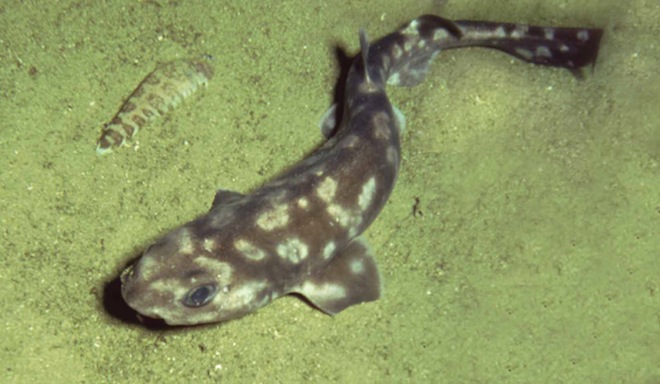A recent expedition by the Woods Hole Oceanographic Institution set out to study the seamounts that surround the islands, and came back with the discovery of a new shark subspecies in Galapagos. These seamounts, more than 70 in total, make up more than 95 percent of the islands, and yet are almost completely unexplored. In the process of seamount exploration, the researcher happened to come across an as-yet unknown subspecies of catshark.

Catsharks are a prolific family of sharks, counting more than 150 subspecies. They are distinguished by their elongated, cat-like eyes, from which they derive their name. They often feature a spotted pattern and two small dorsal fins. While catsharks can vary greatly in size, up to about 5 feet, the new shark subspecies is among the smaller members of the family, only about 1.3 feet in length, or about the same size as a standard house cat. And this is not the first time that the Galapagos archipelago has seen the discovery of new species; in 2012, another species of catshark was found in much the same area.
The catshark discovery highlights the importance of seamounts as habitats for marine life, and the need to further explore these underwater mountains, both around the Galapagos Islands and elsewhere in the world. The researchers hope that their findings will help drive legislation to extend the protected status of the Galapagos to include the underwater landscape as well as the terrestrial one.
“Seamounts are biodiversity hotspots and essential stepping stones for migratory species, including many threatened shark, turtle and cetacean species,” says Pelayo Salinas de León, senior marine ecologist at the Charles Darwin Foundation. “We still have many months of samples and data analysis ahead of us, but this expedition highlights the need to include some of these seamounts as protected areas.”
The Galapagos, a group of 13 islands in all, is known for its natural beauty and importance as a habitat for animals above and below the surface. The islands and parts of the underwater landscape that surrounds them are part of the Galapagos Marine Reserve, or GMR, and it is this marine reserve that the researchers now hope can be extended to include the seamounts.
The 3-week WHOI expedition was run from the Alucia, a research and exploration vessel that features two submarines. The expedition explored the seamounts not only via these subs, but also with various side-scan sonar and hull-based imaging hardware. The data that was gathered formed the basis for planning dives, wherein research divers would collect, among other things, geological samples.
“We’ve just begun to scratch the surface as far as characterizing this environment,” said Dan Fornari, a marine geologist at WHOI and co-principal investigator. “We’ve mapped only about 10 percent of the platform, and already we see tremendous value in how these types of studies can inform our understanding of the Galapagos archipelago.”

